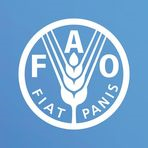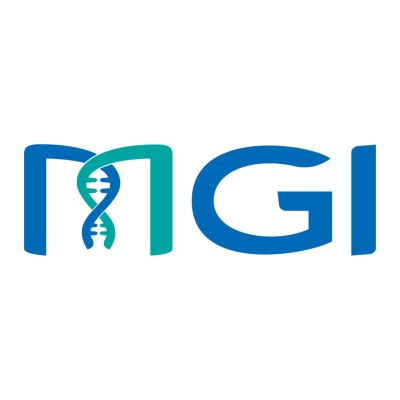The Genetic Revolution: Elevating Peru's Alpaca Fiber Industry
August 3, 2024, 1:01 am
In the highlands of Peru, a quiet revolution is underway. It’s not a clash of swords or a fight for territory. Instead, it’s a battle for quality, sustainability, and economic growth. The weapon of choice? Genomics. This scientific approach is transforming the alpaca fiber industry, a cornerstone of Peru’s textile sector.
Alpaca fiber is more than just a product; it’s a symbol of Peruvian heritage. Known for its softness and durability, it has found its way into the world’s most exclusive fashion houses. Each year, Peru exports nearly $200 million worth of alpaca products to markets in the United States, Europe, and Asia. The stakes are high, and the potential for growth is enormous.
Enter MGI Tech Co., Ltd., a leader in life sciences innovation. In partnership with Universidad Agraria de La Molina (UNALM) and Inca Tops, MGI is spearheading a groundbreaking genetic sequencing project. This initiative involves 1,500 alpacas from the Puno region, aiming to refine the quality and fineness of their fiber. It’s a meticulous dance of DNA analysis, where scientists seek to identify molecular markers that enhance fiber quality while preserving the natural colors of this luxurious material.
Genomics is not just a buzzword; it’s a game-changer. By leveraging advanced genetic tools, researchers can pinpoint the traits that make alpaca fiber exceptional. This means better quality fiber, increased disease resistance, and improved profitability for breeders. It’s a win-win situation, promoting sustainability and efficiency in alpaca farming.
The project kicked off in June 2024 and will run until March 2025. It takes place in the districts of Melgar and Ñuñoa, nestled in the high altitudes of Puno. Here, Inca Tops oversees the collection of alpaca samples at its Pacomarca Scientific Station, a facility renowned for its cutting-edge research capabilities. This station is not just a lab; it’s a beacon of hope for the alpaca industry.
The significance of this project extends beyond economics. It aims to bolster the scientific understanding of alpacas, benefiting breeders and researchers alike. The genetic insights gained will pave the way for future advancements in breeding and production. It’s a step toward a more sustainable and profitable future for alpaca farmers.
Peru is home to over 85% of the world’s alpacas, totaling around 5 million animals. This dominance in the global market presents both opportunities and challenges. While the demand for alpaca fiber remains strong, competition from synthetic fibers and other textiles looms large. The key to maintaining Peru’s leadership lies in innovation. By enhancing the quality of alpaca fiber through genomics, Peru can solidify its position as the premier producer of this sought-after material.
The United Nations has declared 2024 as the International Year of Camelids, shining a spotlight on these remarkable animals. This recognition underscores their importance as a subsistence resource for millions of households worldwide. The genetic research being conducted in Peru aligns perfectly with this global initiative, emphasizing the need for sustainable practices in agriculture.
Alpacas are unique creatures. They offer 23 natural shades of fiber, eliminating the need for dyes. This not only preserves the environment but also appeals to eco-conscious consumers. As the fashion industry shifts toward sustainability, alpaca fiber stands out as a natural choice.
MGI’s role in this transformation is pivotal. The company utilizes state-of-the-art technology for genetic sequencing, including the DNBSEQ-T7RS high-throughput sequencer. This advanced equipment allows for rapid and accurate data analysis, essential for identifying genetic markers. The efficiency of this process means that researchers can focus on what truly matters: enhancing the quality of alpaca fiber.
The collaboration between MGI, UNALM, and Inca Tops is a testament to the power of partnership. Each entity brings unique expertise to the table, creating a synergy that drives innovation. This collective effort not only benefits the alpaca industry but also uplifts the communities that rely on it. By improving the quality of alpaca fiber, farmers can achieve better prices, leading to improved livelihoods.
As the project unfolds, the potential for economic growth becomes clear. The alpaca industry is a lifeline for many highland communities. By investing in genetic research, Peru is investing in its future. The hope is that this initiative will lead to a renaissance in the alpaca fiber market, attracting new buyers and increasing demand.
In conclusion, the genetic sequencing project in Peru is more than just a scientific endeavor. It’s a movement toward sustainability, quality, and economic empowerment. As the world turns its gaze toward eco-friendly products, alpaca fiber is poised to shine. With the right tools and partnerships, Peru can continue to lead the way in the global textile industry. The future is bright for alpacas and the communities that cherish them. The revolution is here, and it’s woven into the very fabric of Peru’s identity.
Alpaca fiber is more than just a product; it’s a symbol of Peruvian heritage. Known for its softness and durability, it has found its way into the world’s most exclusive fashion houses. Each year, Peru exports nearly $200 million worth of alpaca products to markets in the United States, Europe, and Asia. The stakes are high, and the potential for growth is enormous.
Enter MGI Tech Co., Ltd., a leader in life sciences innovation. In partnership with Universidad Agraria de La Molina (UNALM) and Inca Tops, MGI is spearheading a groundbreaking genetic sequencing project. This initiative involves 1,500 alpacas from the Puno region, aiming to refine the quality and fineness of their fiber. It’s a meticulous dance of DNA analysis, where scientists seek to identify molecular markers that enhance fiber quality while preserving the natural colors of this luxurious material.
Genomics is not just a buzzword; it’s a game-changer. By leveraging advanced genetic tools, researchers can pinpoint the traits that make alpaca fiber exceptional. This means better quality fiber, increased disease resistance, and improved profitability for breeders. It’s a win-win situation, promoting sustainability and efficiency in alpaca farming.
The project kicked off in June 2024 and will run until March 2025. It takes place in the districts of Melgar and Ñuñoa, nestled in the high altitudes of Puno. Here, Inca Tops oversees the collection of alpaca samples at its Pacomarca Scientific Station, a facility renowned for its cutting-edge research capabilities. This station is not just a lab; it’s a beacon of hope for the alpaca industry.
The significance of this project extends beyond economics. It aims to bolster the scientific understanding of alpacas, benefiting breeders and researchers alike. The genetic insights gained will pave the way for future advancements in breeding and production. It’s a step toward a more sustainable and profitable future for alpaca farmers.
Peru is home to over 85% of the world’s alpacas, totaling around 5 million animals. This dominance in the global market presents both opportunities and challenges. While the demand for alpaca fiber remains strong, competition from synthetic fibers and other textiles looms large. The key to maintaining Peru’s leadership lies in innovation. By enhancing the quality of alpaca fiber through genomics, Peru can solidify its position as the premier producer of this sought-after material.
The United Nations has declared 2024 as the International Year of Camelids, shining a spotlight on these remarkable animals. This recognition underscores their importance as a subsistence resource for millions of households worldwide. The genetic research being conducted in Peru aligns perfectly with this global initiative, emphasizing the need for sustainable practices in agriculture.
Alpacas are unique creatures. They offer 23 natural shades of fiber, eliminating the need for dyes. This not only preserves the environment but also appeals to eco-conscious consumers. As the fashion industry shifts toward sustainability, alpaca fiber stands out as a natural choice.
MGI’s role in this transformation is pivotal. The company utilizes state-of-the-art technology for genetic sequencing, including the DNBSEQ-T7RS high-throughput sequencer. This advanced equipment allows for rapid and accurate data analysis, essential for identifying genetic markers. The efficiency of this process means that researchers can focus on what truly matters: enhancing the quality of alpaca fiber.
The collaboration between MGI, UNALM, and Inca Tops is a testament to the power of partnership. Each entity brings unique expertise to the table, creating a synergy that drives innovation. This collective effort not only benefits the alpaca industry but also uplifts the communities that rely on it. By improving the quality of alpaca fiber, farmers can achieve better prices, leading to improved livelihoods.
As the project unfolds, the potential for economic growth becomes clear. The alpaca industry is a lifeline for many highland communities. By investing in genetic research, Peru is investing in its future. The hope is that this initiative will lead to a renaissance in the alpaca fiber market, attracting new buyers and increasing demand.
In conclusion, the genetic sequencing project in Peru is more than just a scientific endeavor. It’s a movement toward sustainability, quality, and economic empowerment. As the world turns its gaze toward eco-friendly products, alpaca fiber is poised to shine. With the right tools and partnerships, Peru can continue to lead the way in the global textile industry. The future is bright for alpacas and the communities that cherish them. The revolution is here, and it’s woven into the very fabric of Peru’s identity.

